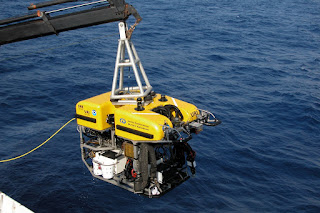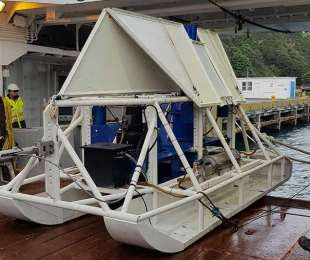The oceans are lovely places for us to see the water, but there are so various types of aquatic life in them that we often don't think about. Some of them are very little and others are extremely large. Thanks to various types of ocean technology we have to understand more about them.
Local authorities, insurance providers or anyone that has had to hire in teams of professional divers to Inspecting marine components, oceans protection barriers and water tanks, know only too well it can be a very costly business indeed. These modern days of health and safety awareness bring many issues associated with working underwater in poor conditions and with it the extra costs involved.
Breathing compressed air in water has time limiting restrictions for divers and depending on the depths the diver has to work, the danger of air bubbles becoming trapped in their bloodstream increase. Professional divers, therefore, have to stick strictly to following Underwater Tracking Systems that limit the amount of time that they can spend working underwater.
It is now possible to bring out marine inspection while at the same time removing the time constraints that divers have when operating marine buy using a small remote control vehicle fitted with video, powerful lights and a camera on board. ROV lights and cameras can provide clear color pictures in real-time to the pilot on the surface and make inspection and marine surveys safer and more economical. For marine inspections, the Videoray can be equipped with a high-resolution digital camera, wide-angle lens, and sonar. Since Videoray weighs only eight pounds and is highly maneuverable it can easily fit into smaller areas than a scuba diver could, such as pipes, drains hulls and in between components.
The acoustic signal processing system is the key to the underwater target tracking system. The solution of the components system and the FPGA interface logic design, and the time-delay evaluation algorithm and its DSP application execution are also introduced. The hardware platform provides top rated in digital signal processing g and the software design task becomes easier through the proper FPGA interface logic design. The experiment shows that the program could accomplish the time-delay evaluation of two marine objectives in high-precision and could meet the requirements of underwater target tracking.
The pictures are clear and in color and will show damage, corrosion, defects and marine structural issues up-close. In order to manage upcoming damage and to confirm that regular inspections have taken place, video footage of the inspection can be kept on record for an upcoming inspection. If there is extensive damage to a marine structure, identification is usually quicker and if necessary divers can be called in to bring out maintenance in a shorter time of time. Future inspections can be conducted to confirm that the necessary maintenance has been made to fulfill all current protection standards. This is particularly essential when it comes to public venues or components used by people on a daily basis.
Source: https://bit.ly/2xA14SR


